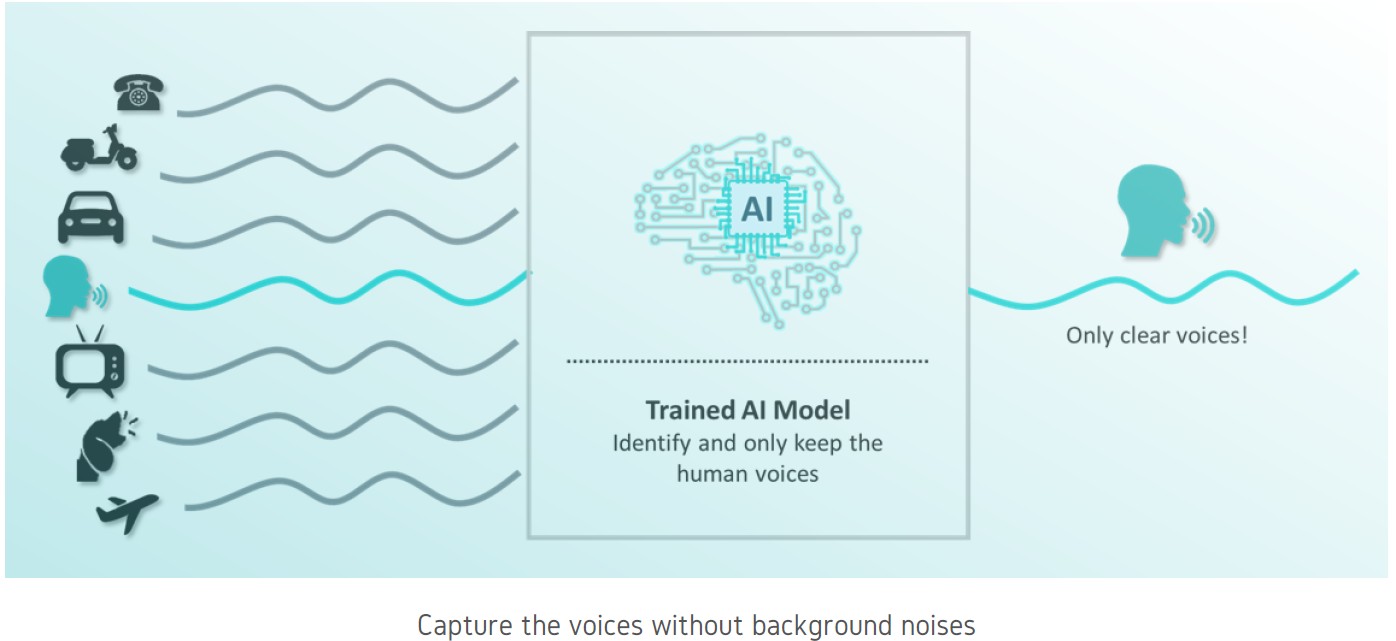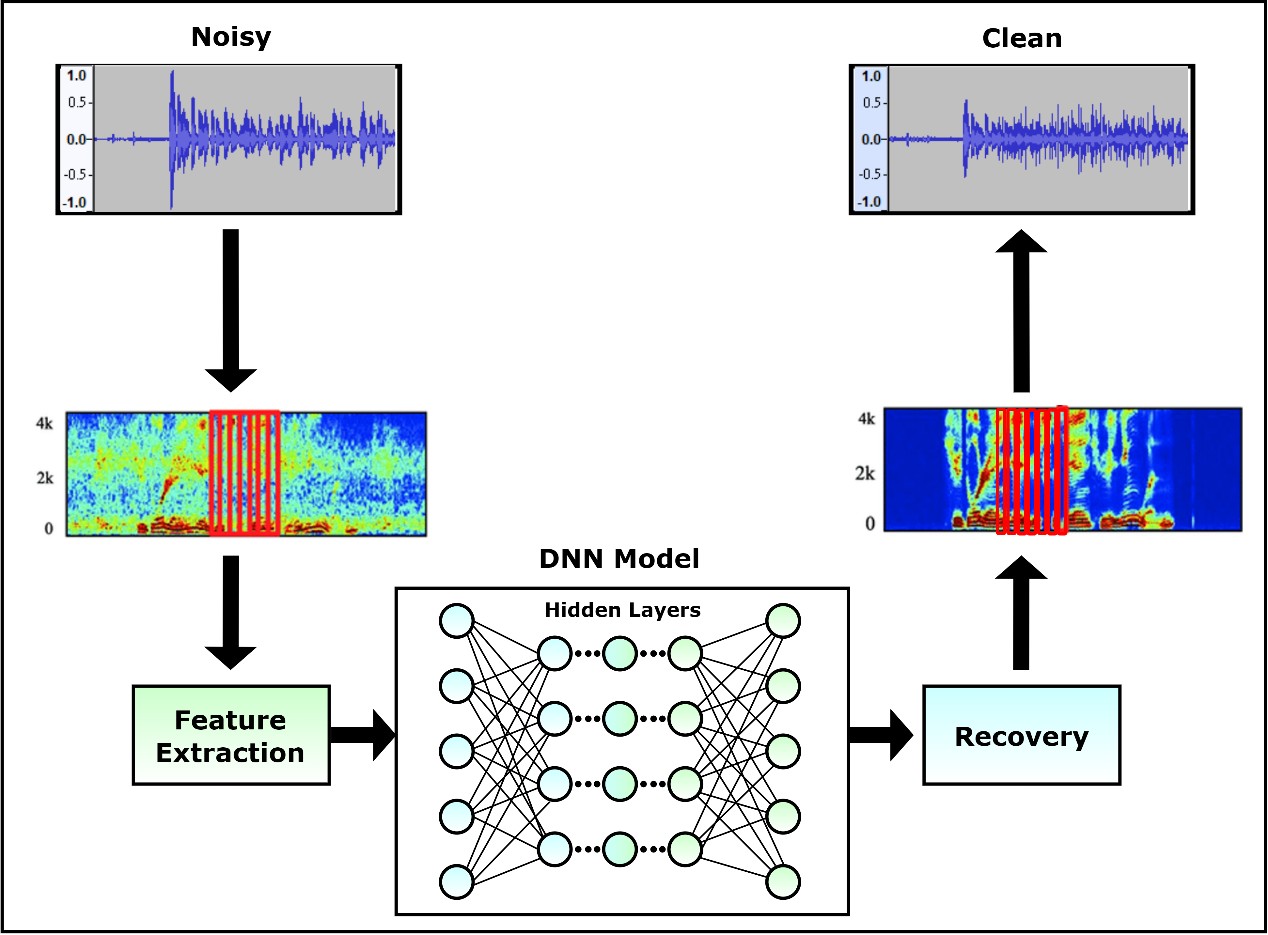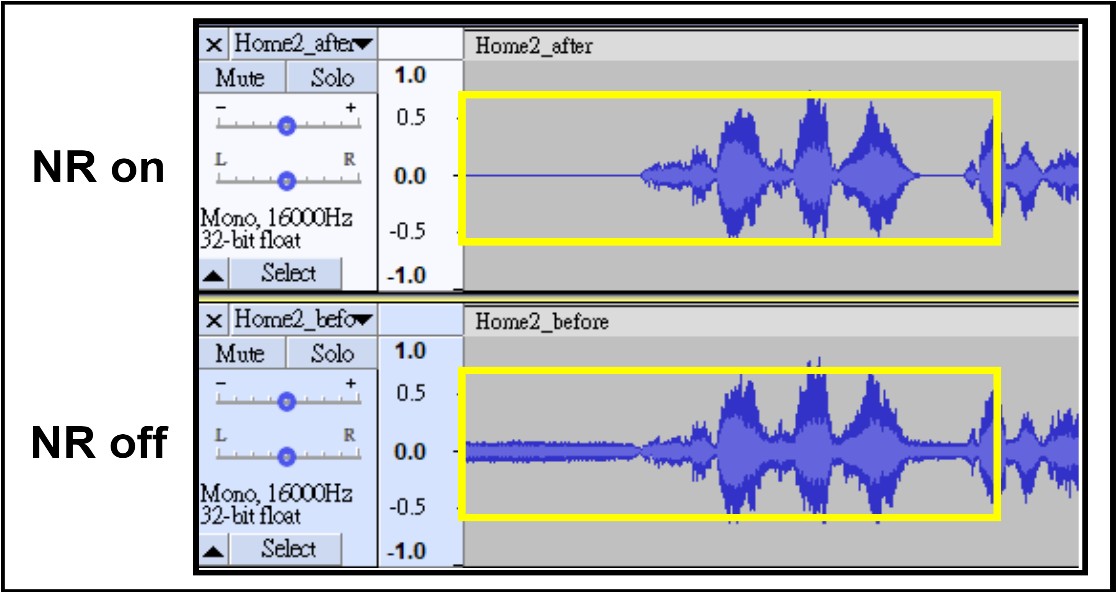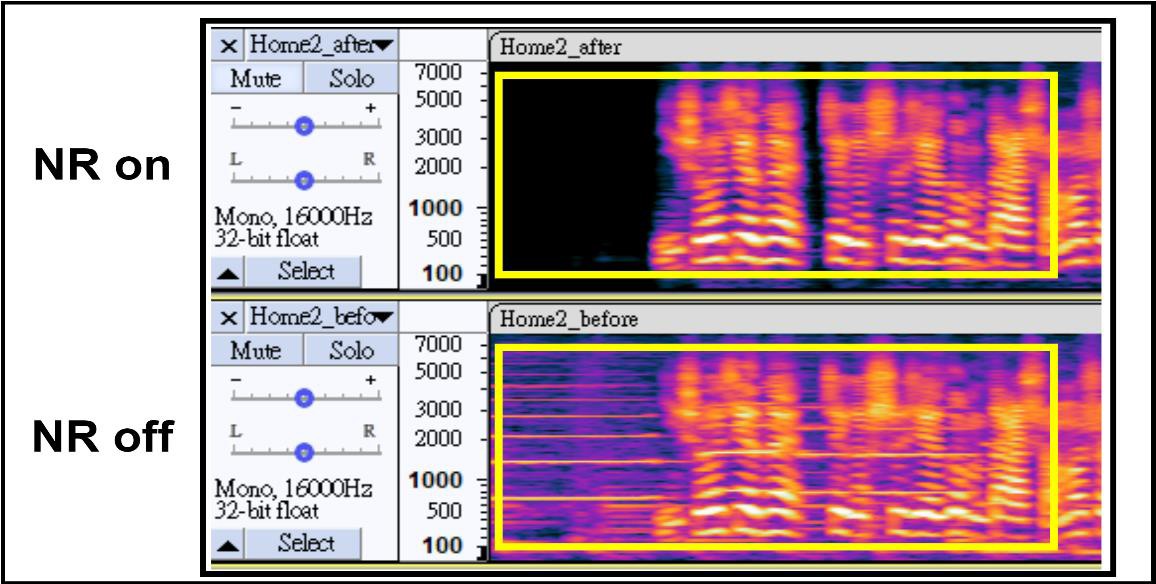Technical Article
-
Discovering the Future of Sound: AI Noise-Cancelling Microphone Module
In an era where artificial intelligence and acoustic technology are rapidly converging, “sound” has evolved beyond a medium for information transmission — it has become a crucial interface between humans and machines. From online meetings and remote learning to smart in-vehicle systems, intelligent security solutions, smart homes, and wearable devices, we increasingly rely on voice to interact with the world. However, in real-life environments, background noise often becomes a major barrier to effective communication. Engine noise, crowd chatter, wind, and the hum of electrical appliances can all interfere with voice clarity.
To enable clearer voice and more natural communication, the AI Noise-Cancelling Microphone Module was developed. This is more than just a sound-capturing tool — it is an intelligent auditory system that integrates acoustic design with AI algorithms, representing the future direction of sound technology.1. What is an AI Noise-Cancelling Microphone Module?

An AI noise-cancelling microphone module is a PCBA device that combines a high-sensitivity microphone unit with an AI noise recognition chip. Traditional passive noise reduction methods rely on physical design or basic filters, which offer limited performance. In contrast, AI-based noise cancellation utilizes machine learning models trained on extensive audio datasets to distinguish human speech from noise, processing the input in real-time.
When a user speaks, the AI system analyzes waveform characteristics, frequency distribution, and energy dynamics to actively suppress background noise while retaining a clear, natural voice. This active intelligent noise cancellation not only enhances voice quality but also boosts speech recognition accuracy, improving the performance of voice assistants, online meetings, and communication systems. 2. Core Technology: Integration of AI and AcousticsThe core structure of the AI microphone module typically centers on electret condenser microphones (ECM) or MEMS microphones, combined with AI algorithm chips or processing modules. Key technical components include:• Electret Condenser Microphone (ECM)Converts sound waves electrical signals using precision diaphragm vibration and capacitance variation, preserving the most subtle dynamics of sound.• Preamplifier and Signal Processing CircuitAmplifies weak audio signals for stable output and supplies clean input data for AI processing.• AI Noise Cancellation AlgorithmEmploys deep learning and neural networks to identify thousands of noise patterns — such as wind, traffic, and crowd noise — and suppress them in real time.• Adaptive FilteringDynamically adjusts noise suppression levels according to the surrounding environment, maintaining consistent audio quality indoors, on the street, or in a vehicle.• Type-C USB Output FormatStandardized Type-C USB output ensures stable compatibility across Windows, macOS, Android, iOS, and Linux platforms.These technologies collectively form the intelligent core of the AI microphone module, enabling it not only to "hear" but also to "understand" the meaning and context of sound.
2. Core Technology: Integration of AI and AcousticsThe core structure of the AI microphone module typically centers on electret condenser microphones (ECM) or MEMS microphones, combined with AI algorithm chips or processing modules. Key technical components include:• Electret Condenser Microphone (ECM)Converts sound waves electrical signals using precision diaphragm vibration and capacitance variation, preserving the most subtle dynamics of sound.• Preamplifier and Signal Processing CircuitAmplifies weak audio signals for stable output and supplies clean input data for AI processing.• AI Noise Cancellation AlgorithmEmploys deep learning and neural networks to identify thousands of noise patterns — such as wind, traffic, and crowd noise — and suppress them in real time.• Adaptive FilteringDynamically adjusts noise suppression levels according to the surrounding environment, maintaining consistent audio quality indoors, on the street, or in a vehicle.• Type-C USB Output FormatStandardized Type-C USB output ensures stable compatibility across Windows, macOS, Android, iOS, and Linux platforms.These technologies collectively form the intelligent core of the AI microphone module, enabling it not only to "hear" but also to "understand" the meaning and context of sound.3. How AI Noise Cancellation Works
The essence of AI noise cancellation lies in real-time sound analysis and separation. When an audio signal is captured by the microphone, the AI algorithm first performs spectral analysis to divide the sound frequency bands, identifying which portions are human voice and which are background noise.
Then, based on its trained acoustic models, the AI dynamically adjusts weighting factors to suppress unwanted frequencies. Finally, using compensation and reconstruction algorithms, it rebuilds a clean and natural voice signal.
This entire process takes only a few milliseconds, resulting in virtually no delay during calls, recordings, or video conferencing.


4. Application Scenarios and Real-World Benefits
 The AI noise-cancelling microphone module has a wide range of applications. Key areas include:• Video Conferencing and Remote LearningFilters out keyboard sounds, background chatter, and room echo, ensuring stable and clear voice communication.• Smart In-Vehicle SystemsAccurately recognizes driver voice commands even during high-speed driving or air conditioning operation, enhancing safety and convenience.• Headphones and Wearable DevicesEnables responsive voice interaction with assistants and reduces ambient noise during calls.• Smart Home and Voice-Controlled DevicesMaintains command recognition accuracy even in noisy environments like kitchens or busy households, improving smart home interactions.• Content Creation and Recording EquipmentReduces post-production costs for audio-visual creators by delivering high-quality voice recordings directly.• Smart Surveillance and Public SafetyAnalyzes environmental sounds to detect abnormal events such as glass breaking or distress calls, enabling sound-level security monitoring.• Smart City ApplicationsCollects city-wide noise data through AI microphone networks to support environmental monitoring and noise management by governments.
The AI noise-cancelling microphone module has a wide range of applications. Key areas include:• Video Conferencing and Remote LearningFilters out keyboard sounds, background chatter, and room echo, ensuring stable and clear voice communication.• Smart In-Vehicle SystemsAccurately recognizes driver voice commands even during high-speed driving or air conditioning operation, enhancing safety and convenience.• Headphones and Wearable DevicesEnables responsive voice interaction with assistants and reduces ambient noise during calls.• Smart Home and Voice-Controlled DevicesMaintains command recognition accuracy even in noisy environments like kitchens or busy households, improving smart home interactions.• Content Creation and Recording EquipmentReduces post-production costs for audio-visual creators by delivering high-quality voice recordings directly.• Smart Surveillance and Public SafetyAnalyzes environmental sounds to detect abnormal events such as glass breaking or distress calls, enabling sound-level security monitoring.• Smart City ApplicationsCollects city-wide noise data through AI microphone networks to support environmental monitoring and noise management by governments.
 5. Advantages of AI Noise-Cancelling Microphone Modules• High Signal-to-Noise Ratio (Hi-SNR):Combines AI and acoustic design to maintain speech clarity even in noisy environments.• Low Power Consumption and High Integration:Suitable for mobile and IoT devices, allowing long-term stable operation.• Natural Sound Quality Preservation:Avoids over-compression or robotic-sounding voice output, maintaining a sense of authenticity.These advantages make AI microphone modules an indispensable core component in the next generation of smart devices.
5. Advantages of AI Noise-Cancelling Microphone Modules• High Signal-to-Noise Ratio (Hi-SNR):Combines AI and acoustic design to maintain speech clarity even in noisy environments.• Low Power Consumption and High Integration:Suitable for mobile and IoT devices, allowing long-term stable operation.• Natural Sound Quality Preservation:Avoids over-compression or robotic-sounding voice output, maintaining a sense of authenticity.These advantages make AI microphone modules an indispensable core component in the next generation of smart devices.6. Conclusion: Smarter Sound, Clearer Communication
The AI noise-cancelling microphone module not only signifies the evolution of acoustic technology but also heralds a new era of intelligent human-machine communication. It ensures that every call, recording, and voice command is more accurate and natural.
As AI algorithms and acoustic materials continue to advance, microphones will evolve from mere “auditory sensors” to intelligent hubs capable of understanding context and emotion. Whether in work, entertainment, or smart city environments, AI noise cancellation technology will help us hear more clearly, speak more freely, and make the world of sound purer and smarter.

 RFQ
RFQ